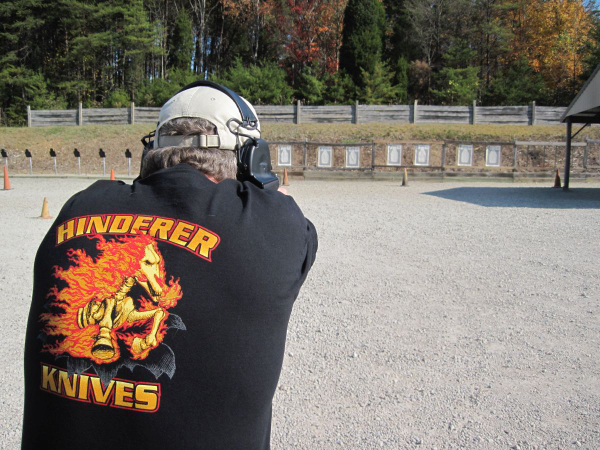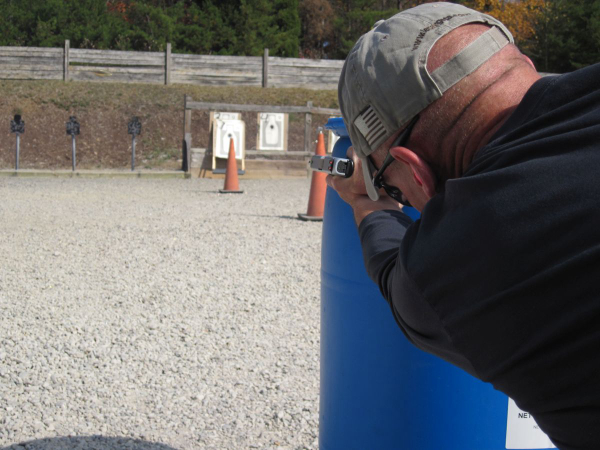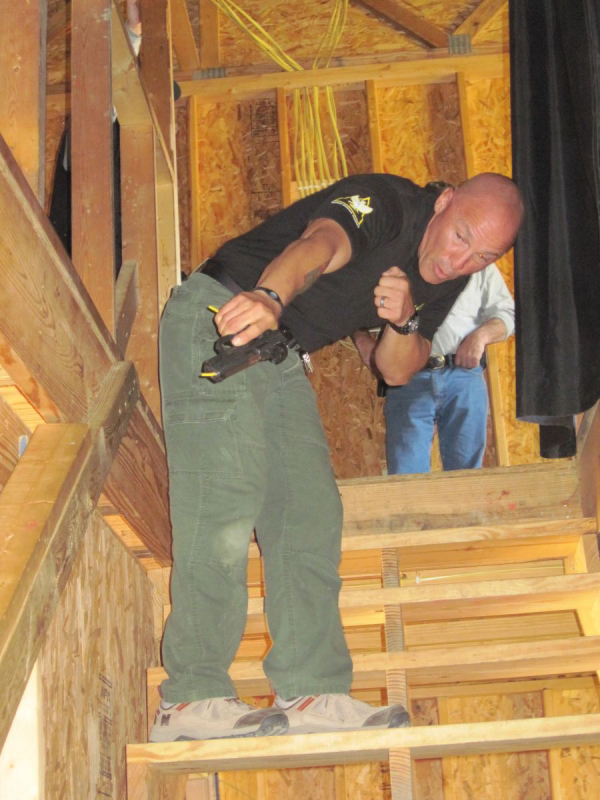Today’s feature is from correspondent Dave Spaulding. Images are from a TDI Active Killer course.
In 1984, James Huberty entered a San Ysidro, Calif. McDonald’s with several firearms and began to kill its patrons for no apparent reason. In one of the largest mass killings in history, he shot 40 people, killing 21. Experts pontificated on the possible reasons for his actions, but no one really knew. In the end, he was deemed a “crackpot” and life went on.
This incident had a profound effect on me, and I read everything that I could find about it. I began to wonder what would have happened if my wife and children had been in that restaurant. What did the responding officers feel as they stood back and watched? They must have felt so helpless as they stood by and waited for command officers to issue an order. What would have happened if this had been a school building?

Unfortunately, we now know the answer to this last question. Such incidents have occurred with enough frequency that law enforcement had to make changes in the way we respond. SWAT was thought to be the answer. We trained police officers to set up a perimeter, contain the situation and wait for SWAT to respond. The incident at Columbine changed everything. While containment was being established, children were being murdered. A public outcry immediately followed the incident.
The next evolution was the creation of the “Rapid Response System” (Quad and “T” systems) in which officers were trained by SWAT to create ad hoc entry teams to deal with shooters before more innocents died. I attended several of these courses. They were all well thought out, but as I completed the courses, one question remained, “Will these four officers from different agencies be able to come together three or four years from now and perform this action?” I doubted it.
Today, some trainers are breaking away from impromptu teams and calling for one or two officers to enter and cautiously move toward the sound of gunfire to stop the carnage, a move that I support.
Of course, there is debate regarding which response is the best method, and I’m sure this debate will continue for the foreseeable future. I made my decision many years ago and it remains in place to this day. Right after the incident in San Diego County, I gave much thought to what I would do if faced with a “slaughter in progress,” how I would respond to the death of women and children before my very eyes. I was a young SWAT officer at the time and while SWAT tactics were not as refined as they are today, entry tactics, room clearing, movement/shooting and communication were much the same then as they are today. Patrol rifles were not common, but every car had a shotgun, and I carried a box of slugs in my briefcase and I knew their POA/POI at 50 yards. Once I was assigned to SWAT, I had either an HK MP-5 or an AUG-P 5.56 in the trunk to work with. These days, I will likely have a handgun and I can hit a 3 x 5 card out to 25 yards; it is what I will have to go with. Less than desirable but it has long been understood we go to war with what we have, not what we want.

In any event, I decided that when faced with an active killing I would go in, alone if necessary, but preferably with another officer to act as a rear guard. I didn’t worry about specialized training. I decided I would use building search tactics that were standard and well-practiced throughout Ohio thanks to Bill Groce, a forward- thinking instructor and mentor at the Ohio Peace Officer Training Academy. My plan was I would enter, move, slice the pie and clear hallways and rooms as I had been taught. The difference is I would compress the time it took to perform these actions, hopefully hastening my identification of the shooter’s location and stop his/her actions.
If shots were being fired, I would move in the direction of the sound as quickly as possible, scanning in a 360-degree arc for other threats. Having responded to an actual fire at an elementary school (not a fire drill), I realized that frightened children might try to cling to me, but all I could do is peel them off, offer a few quick words of comfort and move forward to the sound of the gun(s). If I arrived at the scene of the carnage and the shooting had stopped—say it had turned into a hostage crisis—I would back off and wait for SWAT. My response would depend on whether the shooting was ongoing when I arrived.
It was and is a simple plan really, based on existing training and known skills. It’s what I had at the time. To this day, I have not changed my mind about my active shooter plan and if I were in a situation like this as a legally armed citizen, I would respond much the same. Some will think I’m crazy, but I long ago made up my mind that children, the future of our society, are worth dying for and that I will do whatever I can to see that they live to become adults. This is a personal decision and not one I made lightly. I’m not trying to push my decision on you. However, this situation could happen to you, as the trend of active slaughter is not going away. Our media gives huge coverage to such events and more and more people seeking notoriety go on killing sprees. What will you do if you face an active killer and you’re all alone? Maybe you work in a rural area and you’re the only patrol officer for miles around or an armed citizen in the right place at the right time; what will you do? Regardless of your circumstances, it’s a good idea to decide now and make a plan. We should all have a “line in the sand” that we have decided on beforehand. What are you willing to die for?

Active killer training continues across the country, and some programs are better than others. I attended several while still a serving law enforcement officer. The best one I have attended for the armed citizen was the “Active Killer for the Armed Citizen” course at the Tactical Defense Institute in West Union, Ohio. I have come to believe over the years that any program requires a lot of choreography and complex skills will fail in a crisis. The programs I like best are those based on simplicity and common sense. Not every officer or armed citizen across the United States will receive such training. Further, as police officers leave or retire and new ones come on board, the training must be repeated which oftentimes does not happen.
If you haven’t received such training, you can still prepare to face such situations. Practice basic building-search skills, sharpen your room-clearing ability, and work on negotiating halls and stairways. Be prepared to move towards the sound of the gun(s). These are not complex skills and should not be confused with the cool-looking hostage rescue or raid entry tactics seen in the movies or on YouTube.
Above all, keep your head. When the time comes, don’t let the cries and screams of those in fear divert your attention from the task at hand. You are moving towards a committed killer! Right now, someone is preparing to meet you and beat you. Train hard, and stay on guard.
— Dave Spaulding